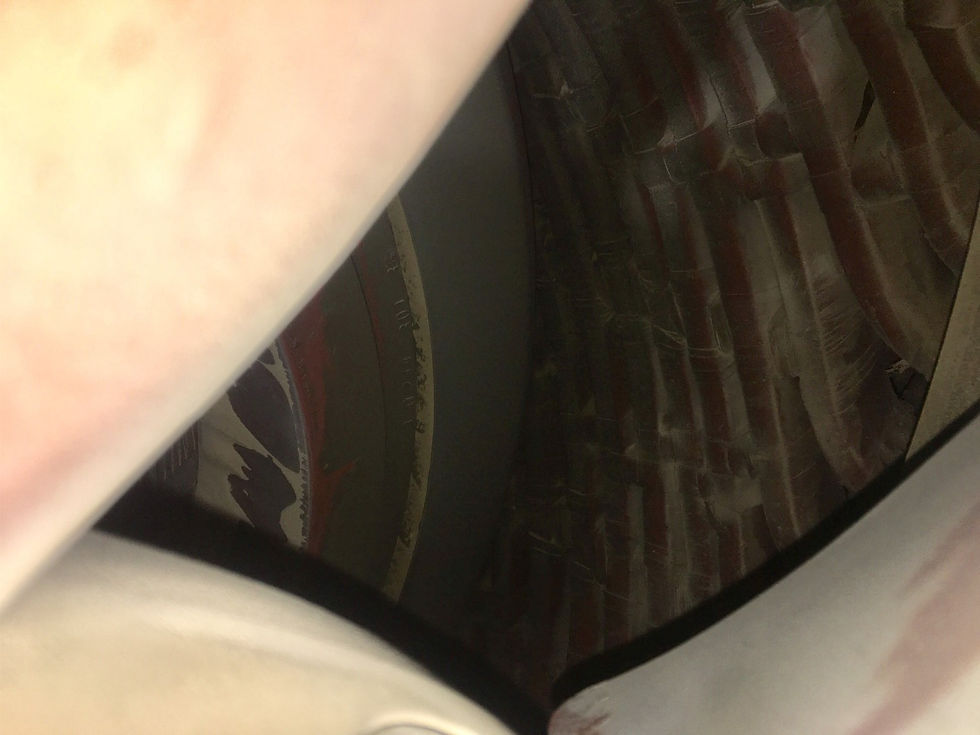Torque those bolts! - The importance of torquing base bolts - Case study
- Nitheesh Abdul Rahman
- Sep 3, 2024
- 3 min read
How often have we seen the hold-down bolts torqued by hand or using pipes? There is a common misconception that tightness is always good. Our team recently had a generator set, and we were called in to carry out vibration analysis and on-site balancing of the flywheel.

The challenge
+ The first start-up of the machine showed very high vibrations, this was after a major overhaul and bearing replacement of the entire set.
+ The shafts were aligned using a laser alignment kit and were well within the tolerances.
+ Start-up vibration reached above 70 mm/s RMS, before reaching the full speed and was shut down immediately to prevent any damage.
+ As start-up data was taken during the run-up, the increase in amplitude and change in phase could clearly been seen. There was a critical speed very close to the full RPM.
+ The critical speed combined with the imbalance prevented the machine from reaching its full RPM.
+ The dominant vibration was on the Motor side. (Name of client crossed out to respect the confidentiality of the client)

+ A trial weight was added, based on in-complete data collected during the run-up. In the next run, the machine had a vibration of around 40 mm/s at a critical speed. But was allowed to run till it reached the full RPM to check the vibration. At full speed, the vibration was steady around 23 mm/s RMS (with weight)
+ A balancing weight was calculated and reduced the critical speed vibration to around 22 mm/s and full speed RPM vibrations to 7 mm/s.
+ The challenge was not over yet, when the intermittent load was given to the Generator there was a speed drop for this specific machine. This would mean that the machine would constantly be moving in and out of the critical speed zone.
+ Bump Test result was carried out in different zones to study the natural frequencies. The bump test was done using a mallet at a modally tuned hammer was not available readily.

The bump test from the Motor showed a dominant frequency of 28.5 Hz, and the machine was operating at 31.5 Hz. This would mean that the separation is only 10% and when machine speed drops even a bit during the load condition, the separation would even be lower.
The bump test carried out on the machine frame also showed the same frequencies (only near the motor area).
The change is natural frequency occurred only after the maintenance, so possible causes for this was investigated.
As normally seen with changes in natural frequencies, no cracks were observed anywhere. There were no structural or machine modifications as well.
This led the vibration analyst to check for installation issues.
The hold-down bolts?
+ The alignment was done within the limits, and the soft-foot was checked to be within the tolerance. All hold-down bolts of the Motor were torqued with correct torque values.
+ The vibration dampers/ mounting was changed during the maintenance.
+ Since the tightening of this was not verified, all vibration damper hold-down bolts were loooesned and re-torqued.
+ Bump test was carried out again, which showed a reduction in the natural frequency.
+ The natural frequency of the motor and frame shifted to 26 Hz, which increased the separation to 20%. This also ensured that the machine, even when the speed drops, does not go into the critical speed zone.

+ Data was taken again, the machine now operates with a maximum vibration of 4.5 mm/s RMS. Which is well below the OEM tolerance of 7 mm/s set by the OEM
+ A challenging balancing job, vibration troubleshooting was thus concluded successfully.

*Osborne Engineering provides dynamic balancing all across the Middle East and Europe. Including UAE, Poland, Oman, Bahrain, Kuwait, Saudi Arabia, and Qatar.





Comments